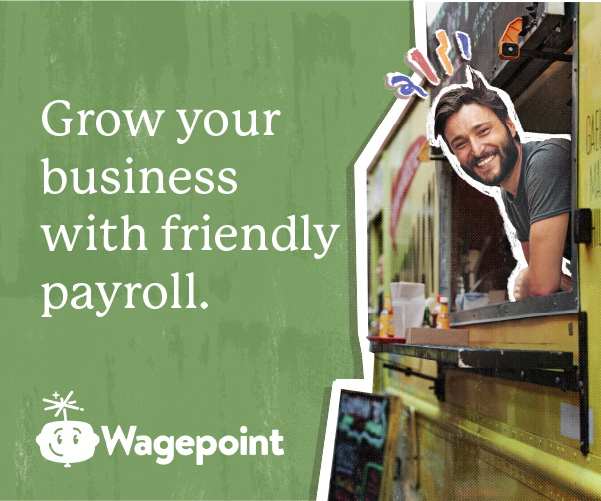“Which way do I go now?” Have you ever gotten lost while outside looking for a particular destination? Digital map apps and providers of the outdoors have, for the most part, solved the challenge of finding that hidden gem of an ice cream shop in your neighbourhood. But how about getting lost indoors? It’s not entirely the same when it comes to current technology. Looking at static maps, directional arrows, asking for directions, and wandering hallways with vague signage are now becoming a thing of the past with advanced indoor wayfinding using detailed indoor maps.
FoundersBeta recently sat down with Hongwei Lui for a Founder Spotlight. For a more in-depth look at what Mappedin has to offer, we also contacted Michael Law, Director of Marketing, and Jennifer Paredes, Head of HR, for some additional insights into the benefits of indoor mapping, what Mappedin is working on, and its people and culture.
Why the need to move towards indoor maps?
Michael Law: Most people spend the majority of their time indoors. This is time spent at work in office buildings, at school on campuses, shopping at malls, or attending events at large venues. Even when inside familiar facilities and venues, finding your way takes time – searching for your next meeting room, looking for that small retailer with the big sale, or finding that study space where your classmates are. If you’re fortunate, some of these indoor spaces will already be mapped and will have wayfinding capabilities available through an app, on a website, or in-person through a digital directory or kiosk. However, many buildings and venues still don’t offer intuitive indoor maps or wayfinding yet. Many businesses, property owners, and venue managers are asking an important first question: how do we get an indoor map in the first place? This is what Mappedin is trying to solve.
Who benefits the most from indoor maps and wayfinding?
ML: Anyone that finds their way through indoor spaces will benefit from indoor maps (basically all of us!). Businesses, organizations, property owners, and venue management need to start thinking about how people move within their buildings. An indoor map helps visualize spaces and it starts with digitizing existing floorplans, blueprints, or printed maps.
We essentially have two main end users to satisfy: our customers who use Mappedin to create, maintain, and display their maps, and the venue visitors who are using the maps on digital directories, mobile devices, and the web to find their way. A great example is employees who are returning to work in offices. They may have never set foot in the office before if they were recently hired, but having an indoor map will help them find meeting spaces, office amenities, and other colleagues more easily.
What are the main benefits of indoor maps?
ML: Indoor maps and wayfinding can bridge the gap, providing people with a better experience and cutting back on lost time. Venues are mapped in digital space so that everything is placed according to real-world locations. Everything from desks to elevators, and entrances to other buildings, are all mapped and allow users to view and explore a venue in its entirety.
Another great benefit is the ability to enable indoor positioning to determine a user’s position within a building. Similar to how a GPS locates a user outdoors, indoor navigation systems make it easier to detect a user, provide an accurate indoor position, and give context to allow for blue dot navigation. This type of indoor navigation is becoming more popular and increasingly helpful in large buildings, campuses, airports, and complex buildings.
Lastly, indoor maps provide businesses, especially those in the retail industry, with the ability to layer on additional experiences while users are navigating their venues. Our Digital Directory solution provides usage analytics and can also serve ads when not being used. We are seeing retail center management pushing promotions and events, which has increased user experiences and engagement.
What kind of new tech is Mappedin working on lately?
ML: We’re working on a lot of great projects. We’ve seen more event venues come through this past year including the Australian F1 Grand Prix and, even more locally, the Canadian National Exhibition (CNE). With more and more workers returning to offices, we’re seeing a surge in companies wanting to do better with office planning using a combination of desk booking systems, indoor maps, and even indoor asset tracking.
Earlier this year, we released Mappedin Response, a platform that allows first responders to create, annotate, and view accurate indoor pre-plans in real-time. Users can upload images or photos of building floor plans or blue prints, and the by using advanced machine learning, Mappedin Response converts these paper-based pre-plans into editable, digital assets. The technology is making way for true indoor spatial awareness.
We’re also focused on a complete rebuild of our Map Editor and developing new ways to make indoor mapping easier. There’s more to come later this year. We’re spending time researching and testing out new technologies like Apple capture technology and machine learning to make more intuitive mapping tools. Lastly, we’ve also been focused on gaining momentum on our partnerships program and having implementation partners take our platform to build awesome solutions. So in short, a lot is happening at Mappedin and we’re excited about more growth.
Switching gears, what kind of talent is Mappedin looking for to build all of this technology?
Jennifer Paredes: We look for talent who are excited about Mappedin. They could be either experienced talent or recent graduates who are tech-savvy because they have been educated with up-to-date technology and platforms. One of our values is “Learn Fast”, and we look for this ability in all of our hires. Specifically for technical and developer roles, we look for people who have the ability to come to the table with a great understanding of the latest technology used in building tools and software. For example, machine learning is an area we would love to see more candidates come with as a skill as it is applicable to some of the product we’re building including Mappedin Response and our Map Editor.
Also, we focus on interpersonal and communication skills. With the movement to remote work, some young, and even experienced professionals, are missing out on opportunities to develop key skills that you would get by working with others face-to-face. While we have many online communication tools at hand to enable employees to collaborate in team meetings and connect socially through virtual events, we encourage people to attend in-person group events and team meetings, in order to collaborate in different ways.
What are some things recent graduates should consider when approaching Mappedin for a role?
JP: Be engaged! Interact with us by reaching out on Linkedin, understanding what we’re trying to achieve, and reading about our company updates. Connect with or send a message to our team members and have a coffee chat to learn more (everyone here loves sharing about what they do at Mappedin!). Since we’re still growing, one of the best ways is to have discovery discussions to see if you’re fit for the role and a fit for the culture even before applying. Regardless of the company you’re aiming to work at, it’s a great exercise to scope out the company to see if it fits you.
Why is culture such an essential part of Mappedin?
JP: We are very proud of the culture at Mappedin and it is a big part of what makes us an exciting place to work. We strive to have a vibrant and strong culture by following several core values: learn fast, be honest and accountable, focus on customers, and play for the team. With each of these values in play, we work hard, support employees in making decisions without having all the information, learn from our mistakes, and help each other reach goals – all in the hopes to provide the best employee experience possible.
Where can others learn more about Mappedin?
JP: You can find us at www.mappedin.com. Check out our blog for everything we’re working on lately, visit our careers page for open positions, and follow us on Linkedin. If you’re interested in chatting with us, connect with us and our team members on Linkedin. We’re always looking for talented people to join our team!






